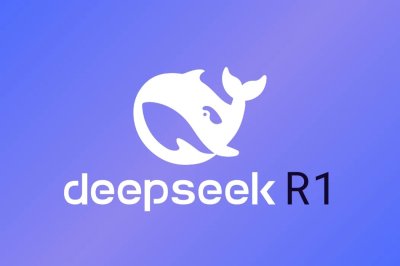Microsoft Unveils Groundbreaking In-House AI Models, Ushering in New Era of AI Speed and Efficiency
@devadigax28 Aug 2025

Microsoft has dramatically accelerated its foray into the generative AI race, announcing the launch of its first internally developed large language models (LLMs): MAI-Voice-1 and MAI-1-preview. This significant move marks a pivotal shift for the tech giant, previously heavily reliant on partnerships with OpenAI. The release of these models underscores Microsoft's ambition to become a leading force in the rapidly evolving AI landscape, controlling its own technology stack from the ground up.
The most immediate impact of these new models is likely to be felt in the realm of speech synthesis. Microsoft boasts that its MAI-Voice-1 model can generate a full minute of high-quality audio in less than one second using a single GPU. This represents a stunning leap in efficiency compared to existing state-of-the-art models, which often require significantly more computational power and time to achieve similar results. The speed and efficiency gains are crucial for applications requiring real-time speech generation, such as virtual assistants, audiobooks, and interactive gaming experiences.
The implications extend beyond sheer speed, however. The ability to generate high-quality audio so rapidly opens doors to a multitude of new possibilities. Imagine AI-powered customer service systems capable of instantaneously responding to queries with natural-sounding voices, or personalized learning experiences incorporating lifelike speech tailored to individual student needs. This level of performance could significantly reduce costs associated with voiceover work and drastically speed up content creation pipelines.
MAI-1-preview, on the other hand, offers a more general-purpose approach. While details remain limited at this stage, the "preview" designation suggests that this model is still undergoing refinement and testing. It likely represents Microsoft's initial foray into broader LLM capabilities, encompassing tasks such as text generation, translation, and code completion. The performance specifics of MAI-1-preview are yet to be fully disclosed, but its existence hints at Microsoft’s commitment to developing a comprehensive suite of in-house AI tools.
This strategic shift towards in-house development is not surprising, given the intense competition in the AI arena. Companies are increasingly recognizing the strategic advantage of owning their core AI technology, ensuring control over their innovation pipeline and minimizing reliance on external partners. Developing its own models allows Microsoft greater control over the direction of its AI research, facilitating quicker iteration and potentially leading to more innovative and specialized solutions tailored to its specific needs and products.
Microsoft's investment in its own AI infrastructure is also likely linked to its broader cloud strategy. Azure, Microsoft's cloud computing platform, is expected to be the primary beneficiary of these new models. By integrating MAI-Voice-1 and MAI-1-preview into Azure services, Microsoft can offer developers and businesses access to powerful AI capabilities directly through the cloud, further strengthening Azure's position in the competitive cloud market. This could potentially attract new customers and enhance the value proposition for existing ones, making Azure an even more attractive platform for AI-driven applications.
The long-term implications of Microsoft's move are far-reaching. The development of MAI-Voice-1 and MAI-1-preview represents more than just the release of new AI models; it signifies a significant commitment to establishing itself as a leading innovator in the field. This push towards internal development and the impressive early results suggest that we can expect to see a flurry of further advancements from Microsoft in the years to come, potentially shaping the future of AI applications across diverse industries. The company's ambition to dominate the AI landscape is evident, and with these initial models showcasing impressive speed and efficiency, the competition is certainly on notice. Further details regarding the availability and licensing of these models are eagerly awaited by the industry.
The most immediate impact of these new models is likely to be felt in the realm of speech synthesis. Microsoft boasts that its MAI-Voice-1 model can generate a full minute of high-quality audio in less than one second using a single GPU. This represents a stunning leap in efficiency compared to existing state-of-the-art models, which often require significantly more computational power and time to achieve similar results. The speed and efficiency gains are crucial for applications requiring real-time speech generation, such as virtual assistants, audiobooks, and interactive gaming experiences.
The implications extend beyond sheer speed, however. The ability to generate high-quality audio so rapidly opens doors to a multitude of new possibilities. Imagine AI-powered customer service systems capable of instantaneously responding to queries with natural-sounding voices, or personalized learning experiences incorporating lifelike speech tailored to individual student needs. This level of performance could significantly reduce costs associated with voiceover work and drastically speed up content creation pipelines.
MAI-1-preview, on the other hand, offers a more general-purpose approach. While details remain limited at this stage, the "preview" designation suggests that this model is still undergoing refinement and testing. It likely represents Microsoft's initial foray into broader LLM capabilities, encompassing tasks such as text generation, translation, and code completion. The performance specifics of MAI-1-preview are yet to be fully disclosed, but its existence hints at Microsoft’s commitment to developing a comprehensive suite of in-house AI tools.
This strategic shift towards in-house development is not surprising, given the intense competition in the AI arena. Companies are increasingly recognizing the strategic advantage of owning their core AI technology, ensuring control over their innovation pipeline and minimizing reliance on external partners. Developing its own models allows Microsoft greater control over the direction of its AI research, facilitating quicker iteration and potentially leading to more innovative and specialized solutions tailored to its specific needs and products.
Microsoft's investment in its own AI infrastructure is also likely linked to its broader cloud strategy. Azure, Microsoft's cloud computing platform, is expected to be the primary beneficiary of these new models. By integrating MAI-Voice-1 and MAI-1-preview into Azure services, Microsoft can offer developers and businesses access to powerful AI capabilities directly through the cloud, further strengthening Azure's position in the competitive cloud market. This could potentially attract new customers and enhance the value proposition for existing ones, making Azure an even more attractive platform for AI-driven applications.
The long-term implications of Microsoft's move are far-reaching. The development of MAI-Voice-1 and MAI-1-preview represents more than just the release of new AI models; it signifies a significant commitment to establishing itself as a leading innovator in the field. This push towards internal development and the impressive early results suggest that we can expect to see a flurry of further advancements from Microsoft in the years to come, potentially shaping the future of AI applications across diverse industries. The company's ambition to dominate the AI landscape is evident, and with these initial models showcasing impressive speed and efficiency, the competition is certainly on notice. Further details regarding the availability and licensing of these models are eagerly awaited by the industry.
Comments
Related News

Beyond the Mic: Instagram Denies Eavesdropping, But AI's Predictive Power Redefines Digital Privacy
@devadigax | 01 Oct 2025
@devadigax | 01 Oct 2025

Microsoft 365 Premium Redefines AI Productivity, Bundling Copilot to Rival ChatGPT Plus Pricing
@devadigax | 01 Oct 2025
@devadigax | 01 Oct 2025

Wikimedia's Grand Vision: Unlocking Its Vast Data Universe for Smarter Discovery by Humans and AI
@devadigax | 30 Sep 2025
@devadigax | 30 Sep 2025

Google Drive Fortifies Defenses with New AI-Powered Ransomware Detection
@devadigax | 29 Sep 2025
@devadigax | 29 Sep 2025

The DeepSeek Phenomenon: Unpacking the Viral AI Chatbot from a Leading Chinese Lab
@devadigax | 29 Sep 2025
@devadigax | 29 Sep 2025
 AI Tool Buzz
AI Tool Buzz